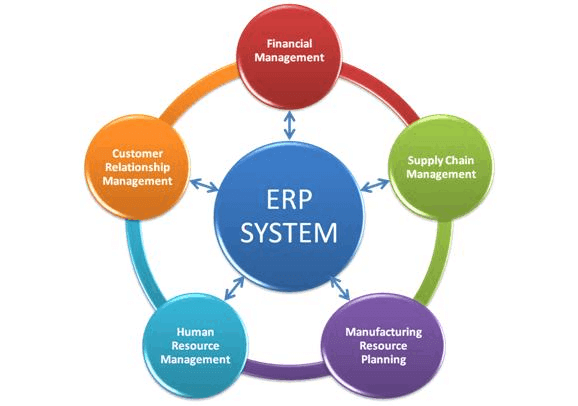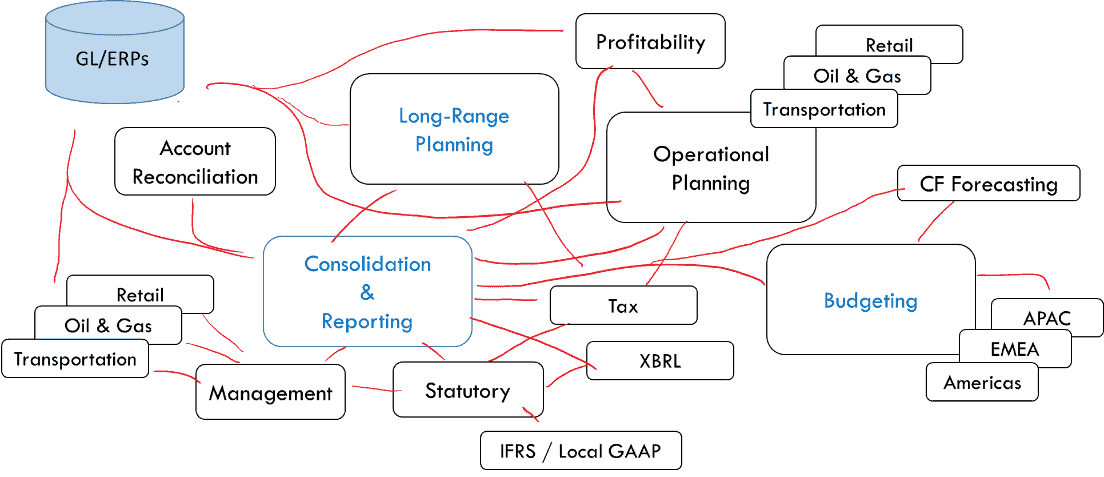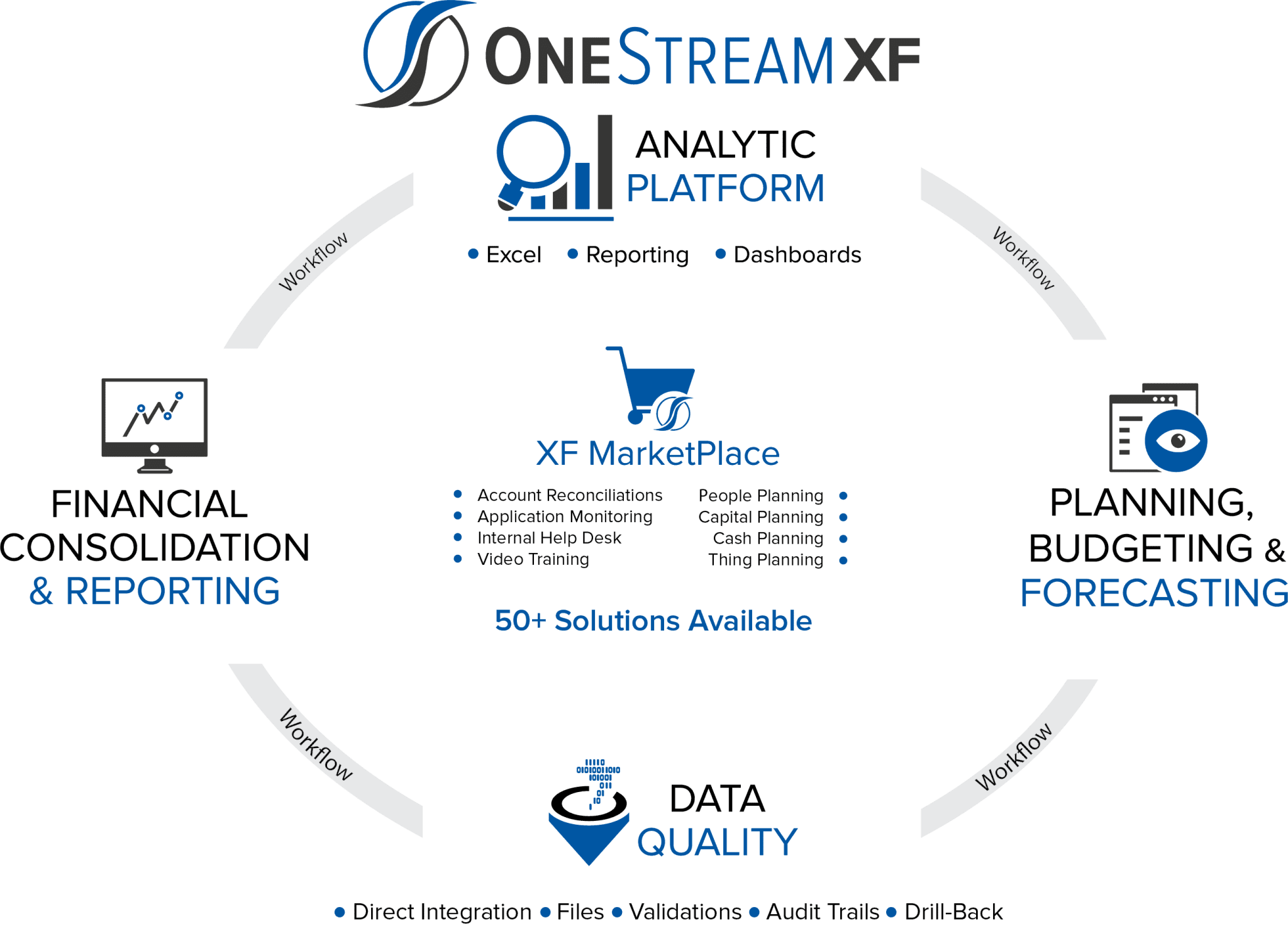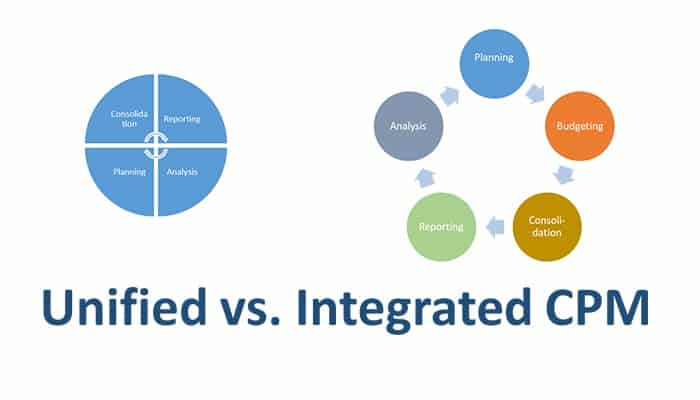The software industry is chock-full of buzzwords and terms that get broadly adopted and sometimes taken for granted. One of the most over-used terms in the past 20 years or so is undoubtedly the word “integrated.” This term has been used across several software product segments and hasn’t always meant the same thing.
In the CPM software segment, “integrated CPM suites” have dominated the market for years. But now there are “unified” CPM applications available that are easier to deploy, manage and upgrade – allowing Finance teams to spend less time managing systems and more time analyzing results and getting back to business.
Integrated PC Software
Early uses of the term “integrated software” were in the PC software segment, where the commonly used functions of many productivity programs were combined into one application – e.g., Microsoft Works, Lotus Symphony. That approach was eventually supplanted by “integrated suites” of applications like Microsoft Office. While MS Office includes separate applications (Excel, Word, PowerPoint), the common thread is that they share a common look and feel, and users can share data between programs.
Integrated ERP Software
In the enterprise software segment, the term “integrated” was applied as the market  evolved from point solutions to “integrated application suites” for areas such as enterprise resource planning (ERP). ERP is defined as a suite of integrated applications – applications that an organization can use to collect, store, manage and interpret data from various business activities (i.e., financial management, supply chain, manufacturing, human resources, customer relationship management).
evolved from point solutions to “integrated application suites” for areas such as enterprise resource planning (ERP). ERP is defined as a suite of integrated applications – applications that an organization can use to collect, store, manage and interpret data from various business activities (i.e., financial management, supply chain, manufacturing, human resources, customer relationship management).
Architecturally, these modules share a common look and feel, and have a common database – making it easy to easily share data across related processes. The adoption of integrated ERP software has accelerated over the past 30 years, despite reports of major business disruptions that have been caused by implementations, as well as long and costly upgrade cycles.
Integrated CPM Software
The term “integrated” has also been widely applied in corporate performance management (CPM) software, a.k.a. EPM and BPM software. What is CPM Software? Much like the PC and ERP software segments, the CPM software segment originated with point applications designed to address specific processes – such as financial consolidation or budgeting. Then, following the ERP market example, the CPM software segment evolved into “integrated suites” of applications designed to address a broader range of requirements – budgeting, planning, forecasting, consolidation, reporting, profitability analysis, balanced scorecards, etc.
Architecturally, the “integrated CPM suites” from Hyperion and other leading vendors over the past 15-20 years were basically separate application modules (some acquired) that were loosely tied together by a common look and feel, common reporting tools, and some common administration tools – such as meta data management. But each application had its own database, which required multiple points of integration between ERP and CPM applications, and the need to synchronize data between applications for tasks such as actuals vs. budget reporting or profitability analysis.

CPM software has been widely adopted by thousands of organizations, and has clearly helped improve processes such as budgeting, forecasting and financial reporting. But in recent years, there has been a growing recognition of the complexity and costs to maintain and upgrade these multi-product, integrated suites of applications. While some of these application suites have moved to the cloud, their architecture remains fragmented and expensive to maintain and upgrade.
Unified CPM Software
A new generation of CPM software (a.k.a. CPM 2.0) is now emerging in the market that solves the same problems but improves on the architecture of legacy CPM 1.0 application suites. Based on advances in computing power – such as 64-bit in-memory processing, cloud delivery and modern software design approaches – “unified” CPM applications are now available. The key advantage of unified CPM software platforms is that they support multiple CPM processes in a single software product – including budgeting, planning, forecasting, financial consolidation, reporting and analysis. The unified nature of these solutions makes them easier to deploy, manage, support and upgrade vs. the prior generation of integrated CPM suites.
Some unified platforms can be extended with additional solutions from an “apps market” that extend the platform capabilities into new areas – such as people planning, capital planning, account reconciliations and other areas – without adding technical complexity.
Several software vendors are now touting their “unified” CPM applications, but some are more unified than others. Here are some questions you can ask to validate whether the “unified CPM” software you’re evaluating is truly “unified” or merely another “integrated suite”:
- Does the software have one single database supporting all CPM processes?
- Does the need to import/export data between modules still exist, or has it been totally eliminated?
- Does the software have a single point of integration with ERP and other data sources?
- Does the software have one set of application code to install, configure and deploy?
- Does the software have one single code base to upgrade? Can upgrades be completed in a few hours?
- Does the “apps market” include additional modules that get installed separately from the platform and create a new application, or do they extend the existing platform?
If the CPM software you’re evaluating does not meet all these criteria, then it’s not a truly unified solution. That means it will cost you more to deploy, manage and upgrade vs. a truly unified platform. Some solutions are partially unified, with separate modules for tasks such as multidimensional modeling, operational planning, reporting and analysis – so you need to look under the hood and ask the right questions.
OneStream – Unified SmartCPMTM Software
OneStream Software provides a revolutionary corporate performance management solution, the OneStream XF SmartCPMTM platform (XF stands for Extensible Finance). OneStream XF unifies and simplifies financial consolidation, planning, reporting, analytics and financial data quality for sophisticated organizations.
Deployed via the cloud or on-premise, OneStream is the first and only solution that delivers corporate standards and controls, with the flexibility for business units to report and plan at additional levels of detail without impacting corporate standards – all through a single application. We call this unique capability Extensible DimensionalityTM.

Another unique capability of OneStream is the XF MarketPlace. The OneStream XF MarketPlace features downloadable solutions that allow customers to easily extend the value of their CPM platform, without adding complexity, to meet the changing needs of Finance and Operations. Examples of OneStream XF MarketPlace solutions that are already available and in use by customers include People Planning, Capital Planning, Cash Planning, Account Reconciliations, Sales Planning and many others.
The hallmark of a truly unified CPM 2.0 platform is the capability of having multiple solutions for actuals, budgets, forecasts, plans, reconciliations, profitability analysis and more – all living together in a single application. Each solution benefits from leveraging all that the platform offers. OneStream XF eliminates risky integrations, validations and reconciliations between multiple products, applications and modules. It allows Finance teams to spend less time managing systems and moving data – and more time analyzing results and getting back to business.
Learn More
To answer the question about which is better – unified or integrated CPM software – we must look at momentum in the market, and the answer is clearly “unified.” Unified CPM platforms such as OneStream are rapidly gaining market share, replacing legacy, integrated CPM application suites. To learn more about how OneStream’s unified architecture supports multiple CPM processes, as well as corporate and line-of-business planning and reporting requirements, check out the white paper titled “The Power of an Extensible CPM Platform.”
John O’Rourke is Vice President of Product Marketing at OneStream Software. With a background in accounting and finance, John has over 30 years of experience in the software industry, including 20 years of experience in product marketing at Hyperion Solutions, Oracle and Host Analytics. He has worked with many customers and partners on financial reporting and planning initiatives and has spoken and written on many topics in corporate performance management. John has also held positions in strategic marketing and product marketing at Dun & Bradstreet Software, Kenan Systems and Decisyon.
Don’t Miss Another Blog Article, Subscribe Today!
Get Started With a Personal Demo



